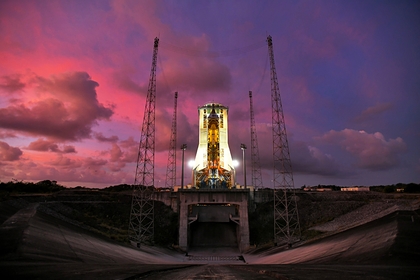The European rockets of the future will be Ariane 6 and Vega C, Frank Heybanom, responsible for the Ariane 6 program at ArianeGroup, said in an interview with SpaceNews.
The manager did not name the average Russian Soyuz-ST carrier, currently being launched from the Kourou cosmodrome in French Guiana, among future European rockets. "We have always used the concept of the European launch family, and today this is the case with the Ariane 6 and Vega C," Heiban said.
The manager did not rule out that an ultralight rocket could be added to them in the future.
In January 2020, the representative office of the European Space Agency (ESA) in Russia, Rene Pichel, announced that all Ukrainian and Russian components in the Italian Vega light rocket would be removed. "Basically, the goal of the evolutionary improvements of the Vega rocket within the framework of ESA development programs is to move towards increasing competitiveness and further Europeanization. The third and fourth Vega stages will be replaced in the Vega E rocket," the manager said.
In June 2018, RIA Novosti, citing a source in the European space industry, reported that Europe by 2023 allows the abandonment of commercial launches of the Russian Soyuz-ST launch vehicle from the Kourou cosmodrome in favor of its own Ariane 6 rocket being developed in a version with two side boosters.
In December 2017, SpaceNews wrote, referring to the words of Renato Lafranconi, responsible for the Vega program at ESA, that the goal of upgrading this rocket (to Vega C) is "Europeanization of what is not European."
Currently, three carriers are being launched in Kura - Vega, Soyuz-ST and Ariane 5. The RD-843 fourth-stage main engine for the Vega light rocket was developed by the Yuzhnoye Design Bureau and manufactured by Yuzhmash (Ukraine). Titanium fuel tanks for the carrier are produced by the Lavochkin Scientific and Production Association (NPO) (Russia). The Soyuz-ST rocket is completely Russian.
The Ariane 6 heavy carrier is planned to be produced in two modular configurations: A62 (with two solid-fuel boosters from the Vega light rocket to launch a payload of up to five tons into geotransfer orbit) and A64 (with four boosters for loads up to 10.5 tons).
Ivan Potapov

